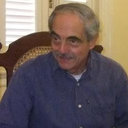[Dynamics of intrathecal immunoglobulin synthesis].
Cuvinte cheie
Abstract
BACKGROUND
Dynamics of the immune response in Central Nervous System (CSN) is different from the well-known switch of IgM synthesis to IgG synthesis in blood.
OBJECTIVE
Broadcast the behavior and the factors involved in the dynamics of the intrathecal immune response in infectious neurological disorders.
METHODS
The lack of a switch from IgM class response to IgG response could be more related to regulation-modulation mechanisms of the CNS immune response than differs from blood in a different cytokines composition, and the possibility of chemokines synthesis during the neuroinflammatory process, and the neuroimmune-endocrine mechanisms. The immune pattern can be stable like neuroborreliosis, and can be modify like in herpes simplex meningoencephalitis. It could have a typical pattern like in Neisseria meningitidis meningoencephalitis and neurotuberculosis. Also the pattern could be still detectable for many years after sufficient treatment and complete recovery of the symptom-free patients like in neurosyphilis or an advanced precocious response during the childhood. In HIV encephalopathy the pattern remains the same during the evolution but in other virus infections, like Echo 6 or Coxsackie B5, depends on the biological agent.
CONCLUSIONS
In order to know the acuity of the disease, we have to know the physiopathologic characteristics of the biological agents, time courses, locations of the pathological processes, and the host age. The main signs in cerebrospinal fluid of an acute, active disease of CNS are the increased of cerebrospinal fluid cell count and the increased of albumin ratio.


